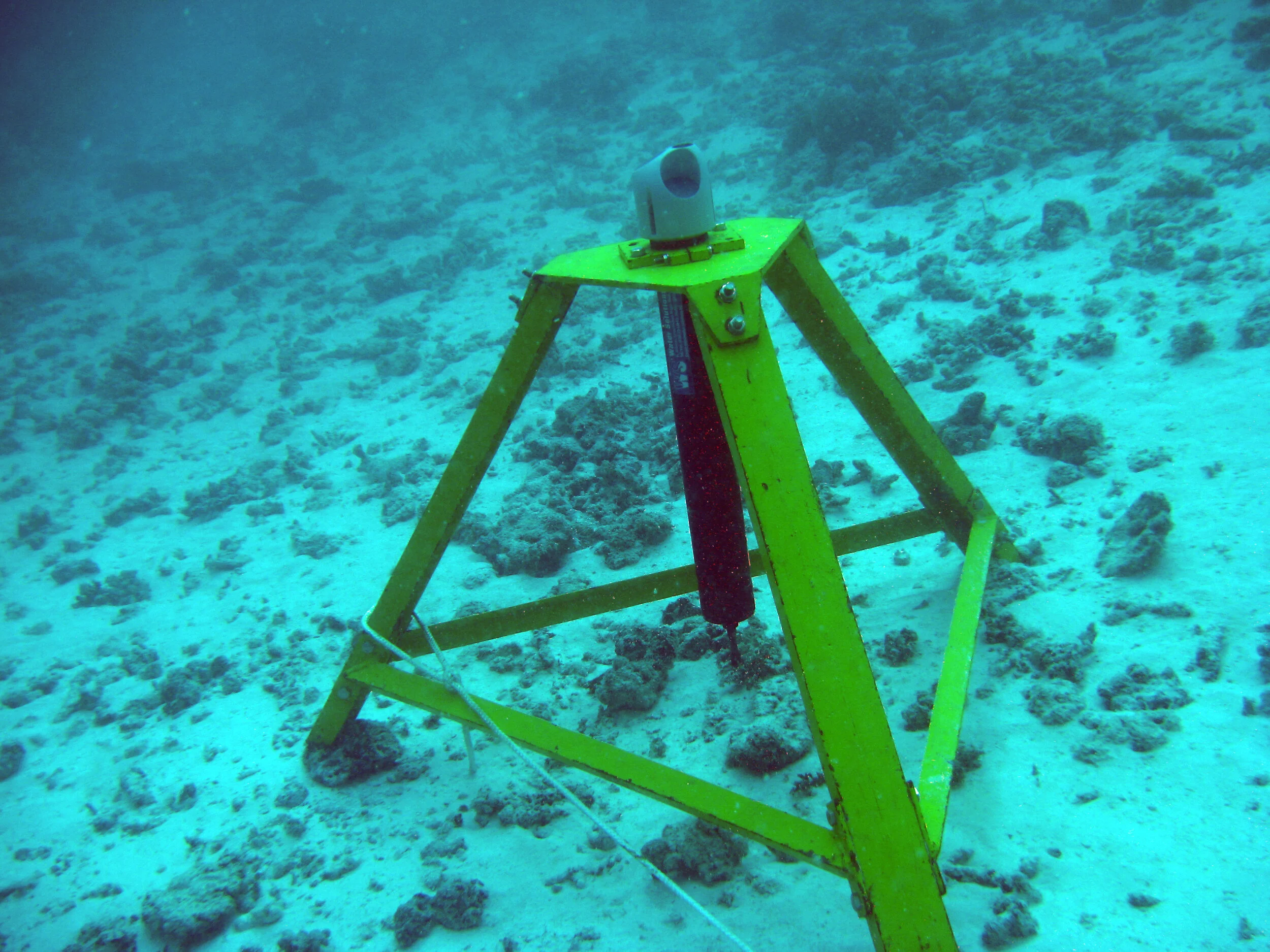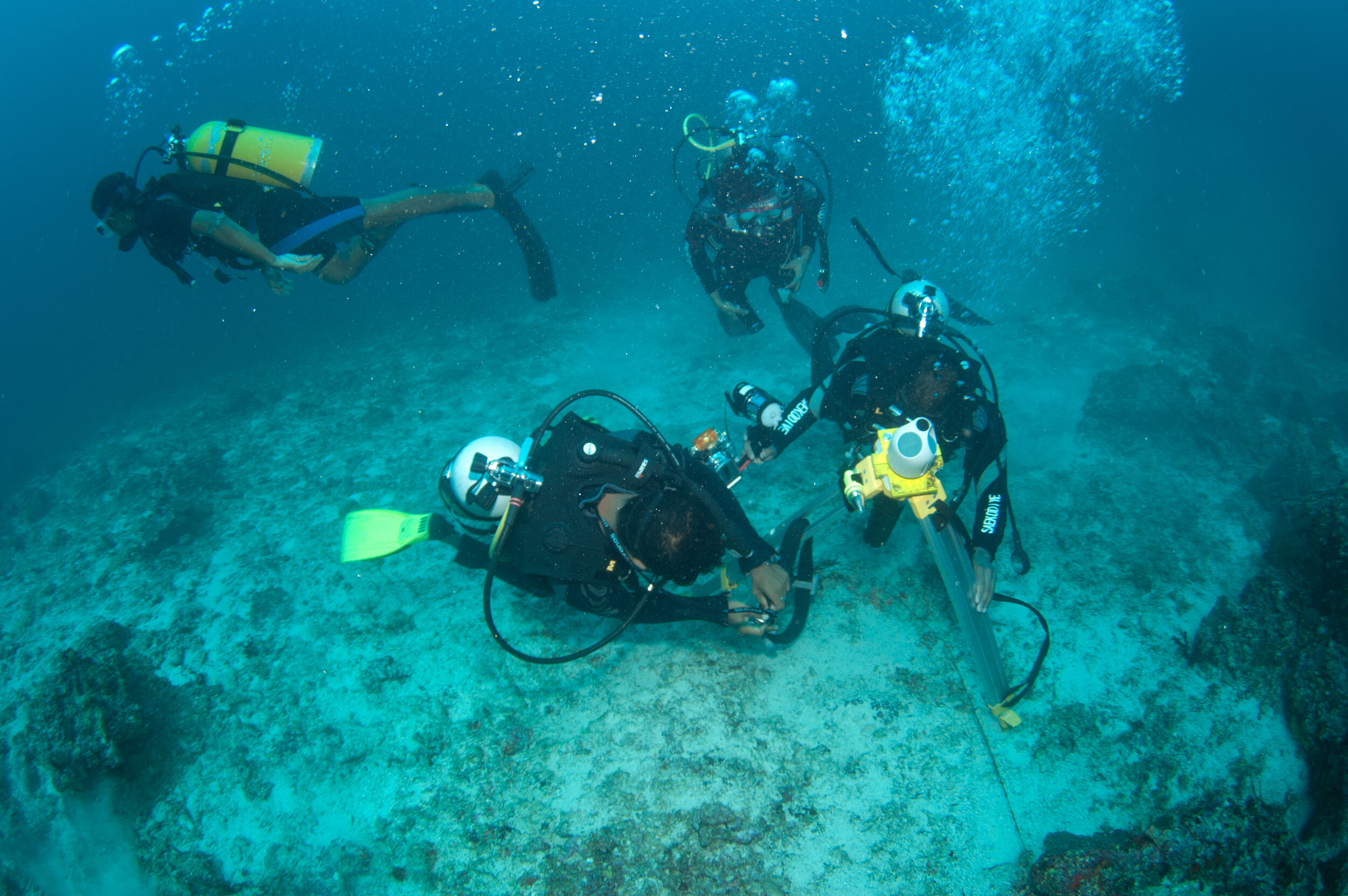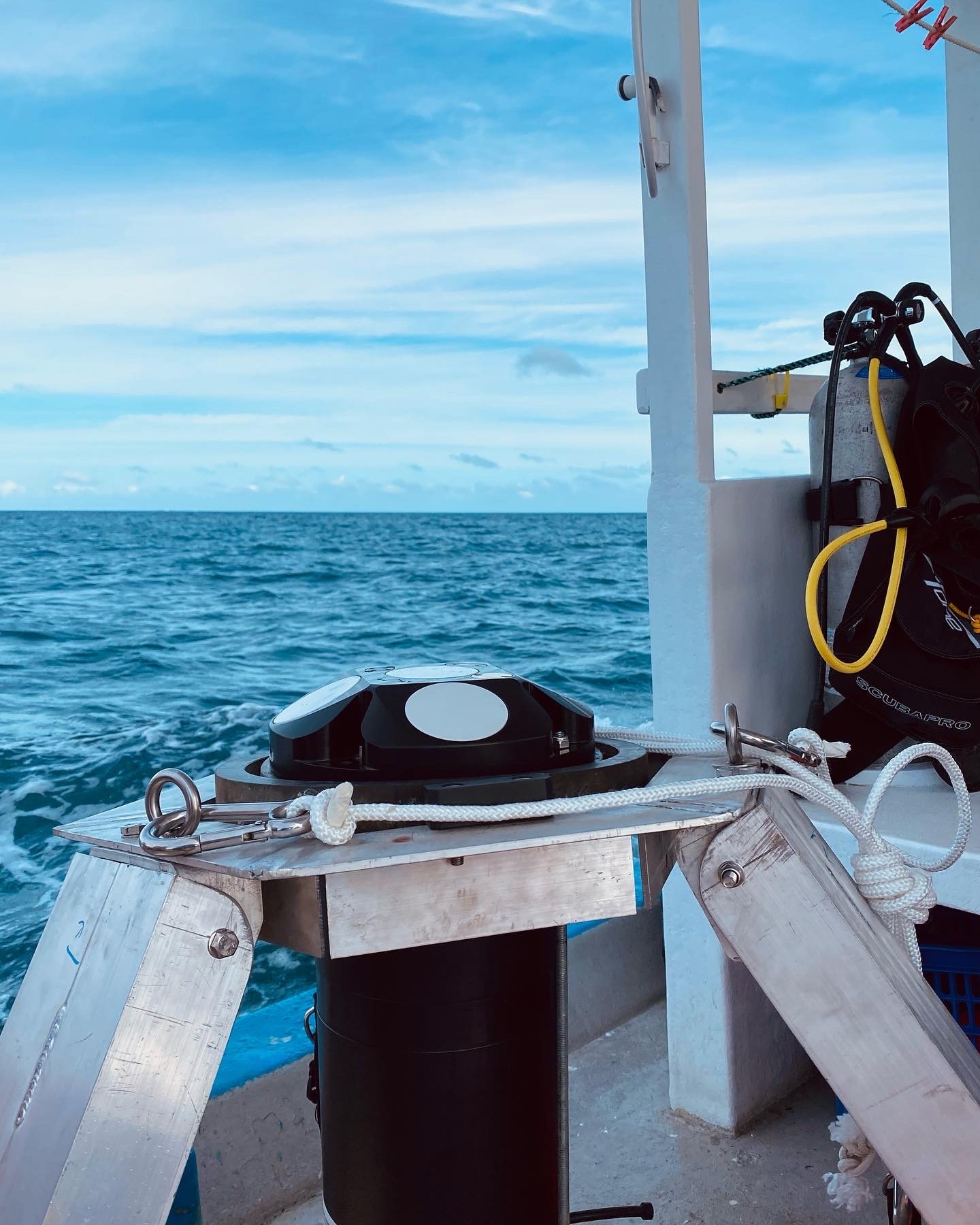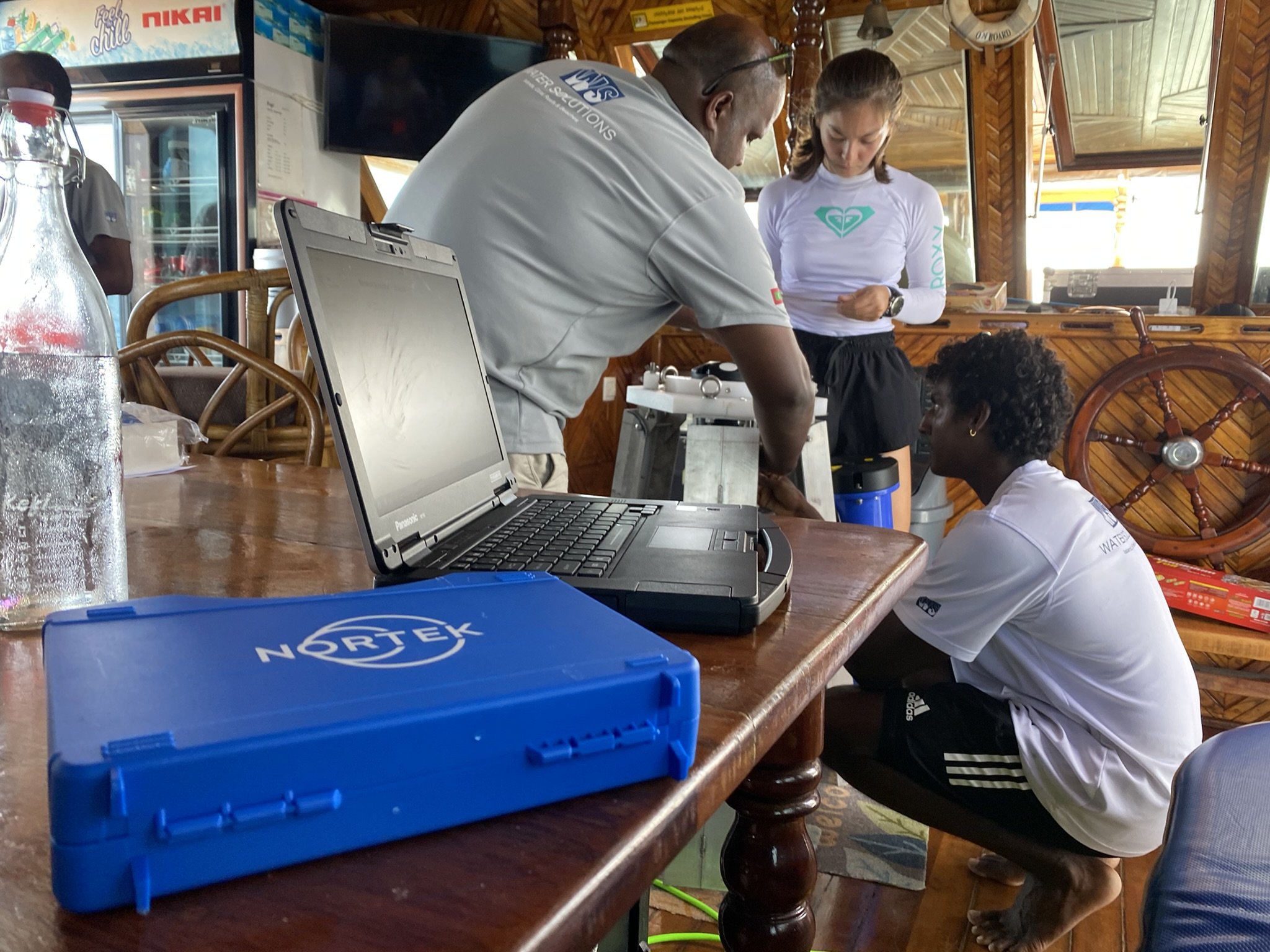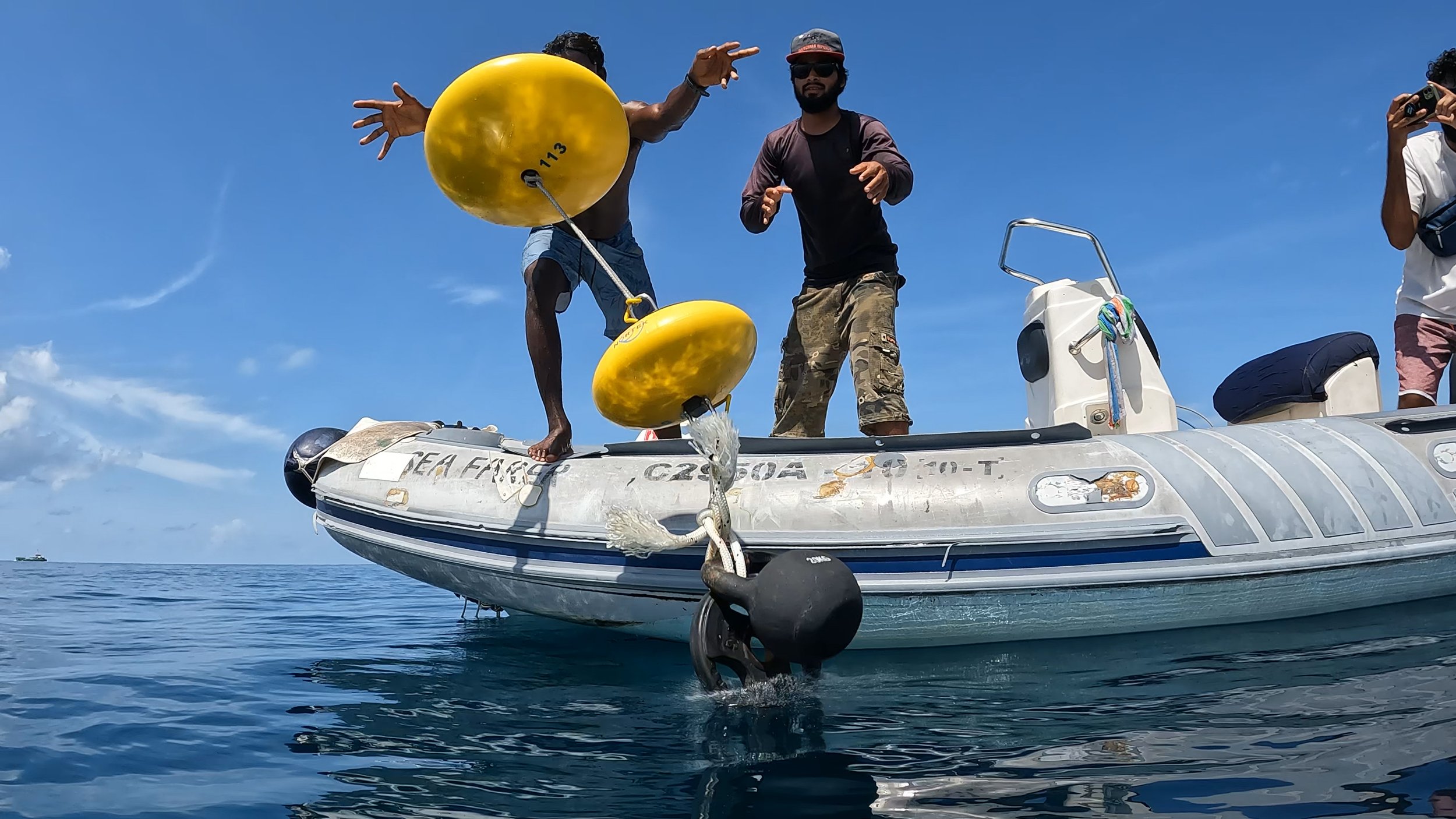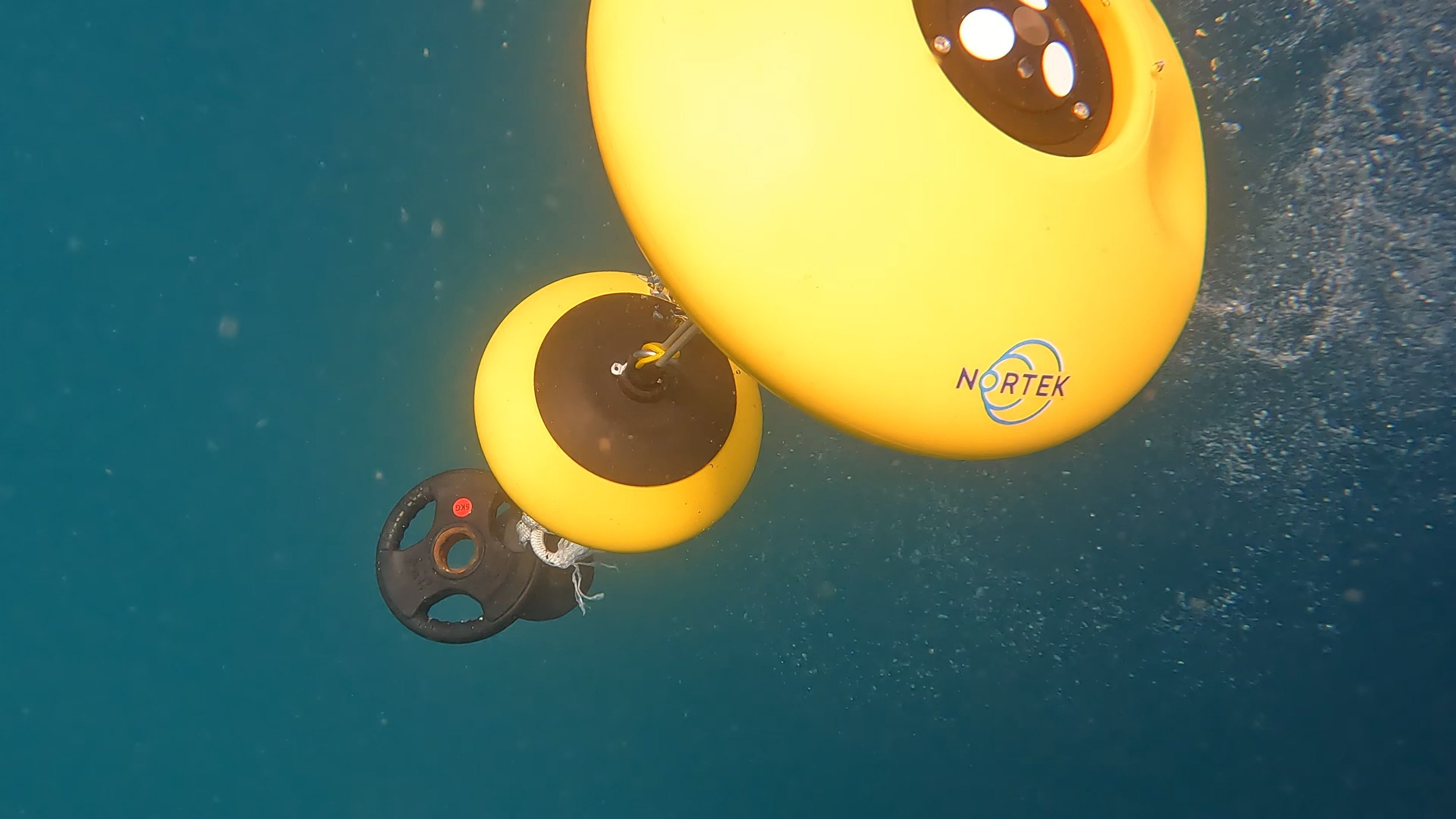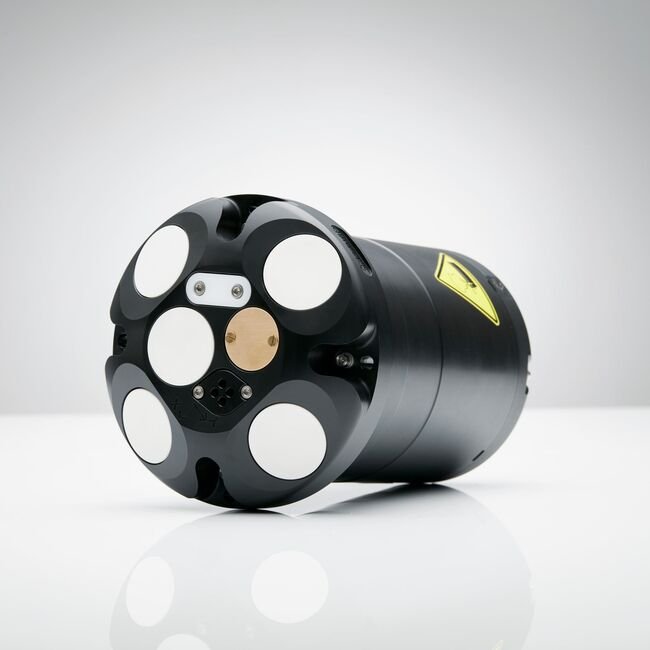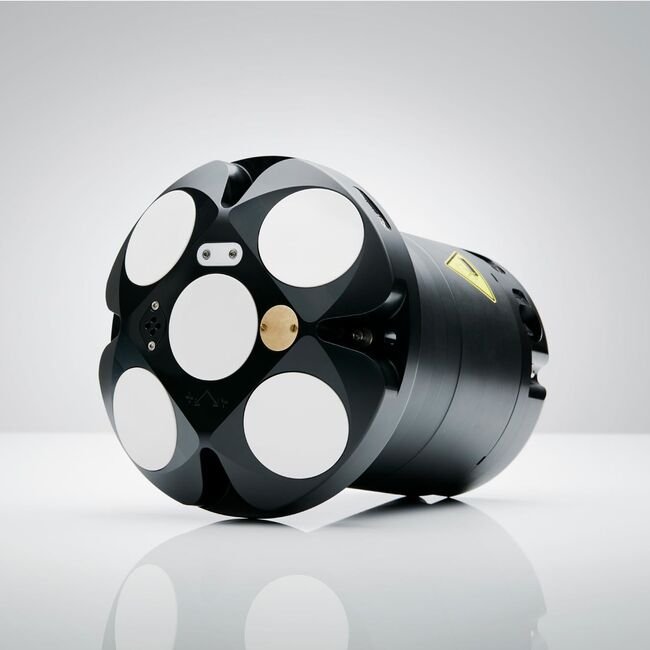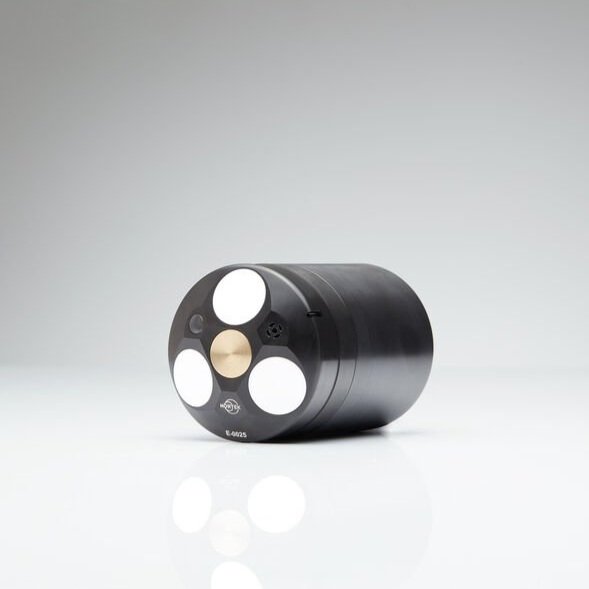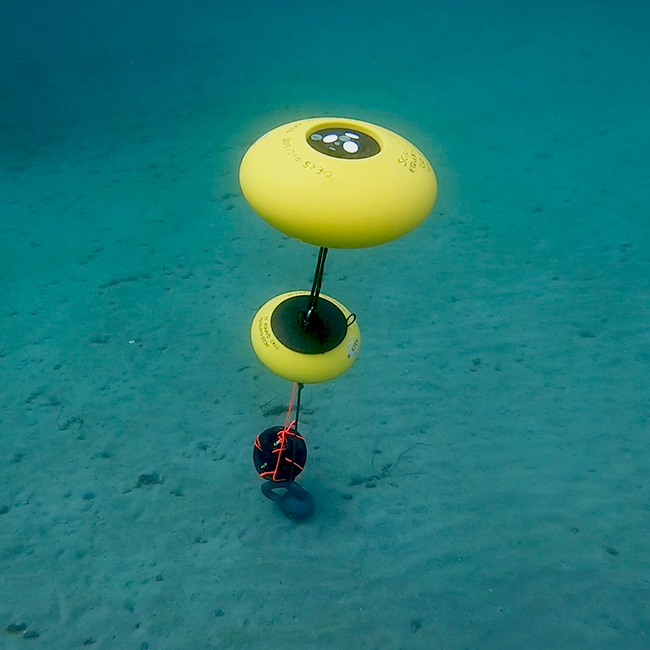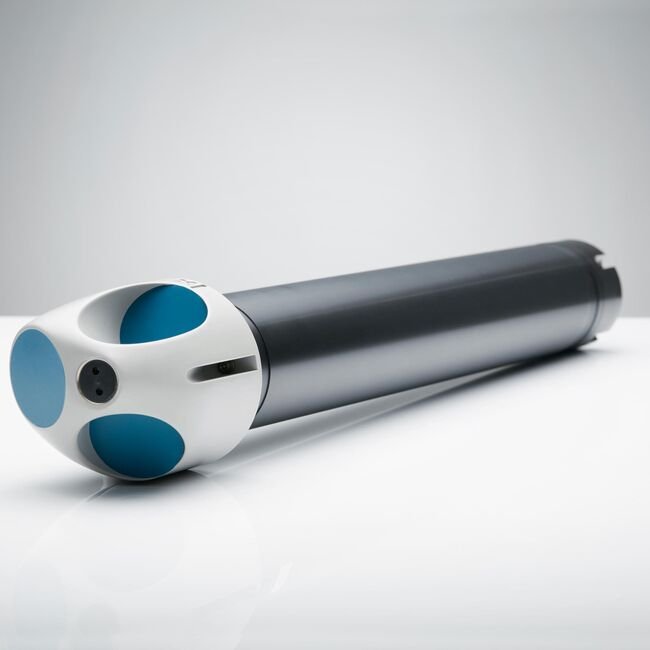Acoustic Doppler Current Profiling
An Acoustic Doppler Current Profiler, or Acoustic Doppler Profiler, is often referred to with the acronym ADCP. In simple terms, ADCP measures how fast water moves across and entire water column. An ADCP anchored to the seafloor can measure current speed not just at the bottom, but also at equal intervals all the way up to the surface. It can also be used to measure how high waves get at a location.
How it works
Moving waters often carry small particles such as zooplankton or sediments. Sound waves sent through these waters undergo scattering. The resulting echoes carry a change in pitch. This well-known effect is called the Doppler shift.
This change in pitch provides a measure of how fast water currents are moving and in what direction. Sound waves propagate through a water column. Thus echoes are continuously created en route due to encounters with moving particles.
ADCPs contain piezoelectric transducers to transmit and receive sound signals. The transmitted sound reflects off the particles and the echo is analyzed. This provides water current velocities at many different depths. Calculating the relevant measurement depth for a segment of the echo record uses the elapsed time since the sound waves' emission. Such a breakdown of the data is a water current profile.
Applications of ADCP
Environmental impact Assessments
Planning
Port development
Land Reclamation
OUR CAPABILITIES
In order to cater for various requests from our clients we have a line up of the following profilers, Each one with unique features and applications. We use Nortek technology for our oceanographic data collection. Nortek instruments are used by scientists, researchers and engineers at renowned institutions and government agencies worldwide. They are employed in demanding environments that require state-of-the-art instrumentation that is reliable and easy to use.
Most of Nortek’s technology is based on a scientific physical principle called the Doppler effect. This relates to the change in frequency (or pitch) when a sound source moves with respect to an observer.
By measuring these changes in frequency/phase, our instruments accurately measure profiles of speed and direction of complex water motion.
NORTEK SIGNATURE 1000
The Signature1000 ADCP is the optimal tool for turbulence measurements. With a maximum sampling frequency of 16 Hz, it gives the scientific community an unprecedented opportunity to study a part of the turbulence spectrum that has never been accessible before. Vertical resolution current profiles of 2 cm over a range of up to 8 m further increase the Signature1000’s versatility, as does its ability to measure wave height and direction. The centre beam also functions as a biological echo sounder, enabling high-resolution measurements of biomass in the water column.
NORTEK SIGNATURE 500
The Signature500 ADCP is designed for flexibility. It measures current profiles at up to 8 Hz sampling frequency. It can also measure direct vertical velocity profiles, wave height and direction, and acoustic ranging to ice. The centre beam also functions as a biological echo sounder, enabling high-resolution measurements of biomass in the water column. All these features can be combined using Nortek’s patented concurrent mode technology.
NORTEK ECO
The Eco current profiler is the first ADCP right-sized and designed specifically for shallow water measurements. It allows you to measure water velocities in situ, through the water column using the same acoustic Doppler technology as other Nortek instruments, but in a more affordable and easy-to-use package. Simple buoy and bottom-mount solutions are available and designed to fit Eco off-the-shelf.
NORTEK AQUADOPP
The Aquadopp Profiler provides quality data using the industry-standard auto covariance method to assure accurate and unbiased data, and it retains the classical advantages of acoustic Doppler systems including insensitivity to biofouling and no moving or protruding parts.
The Aquadopp Profiler is a highly versatile Acoustic Doppler Current Profiler (ADCP) available in four profiling range options, from < 1 m to > 85 m. The 600 kHz version has a current profiling range of up to 40 m. Designed for simple yet powerful operation, this current profiler is packed with features used by engineers and researchers to enable accurate and effective hydrodynamic data collection in a variety of environmental conditions.
Results and examples
Sample data output from ADCP sensor accross the water colume to a depth of 16 metere

